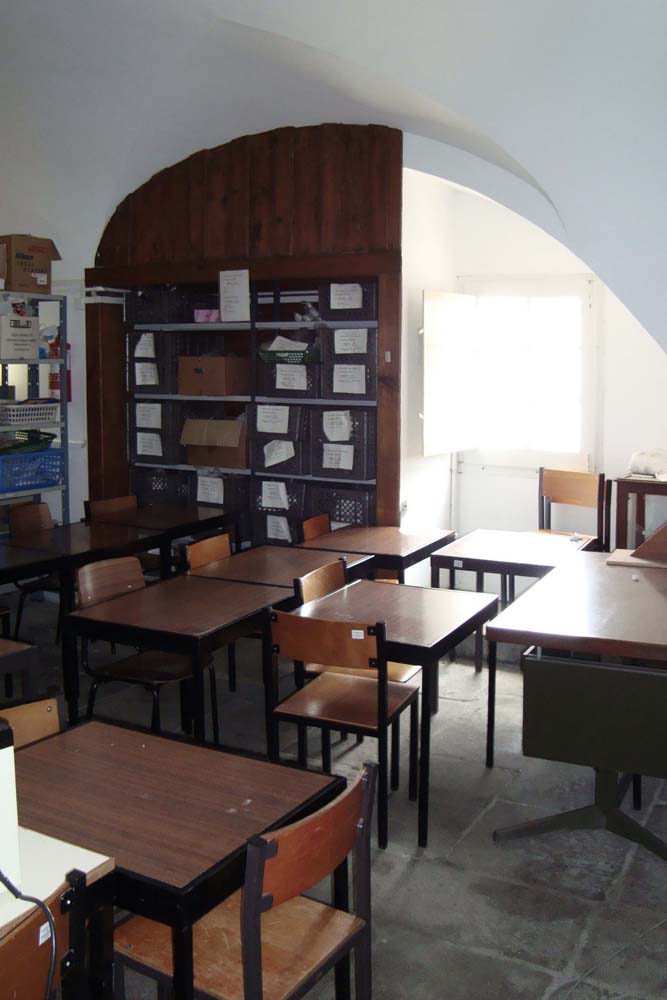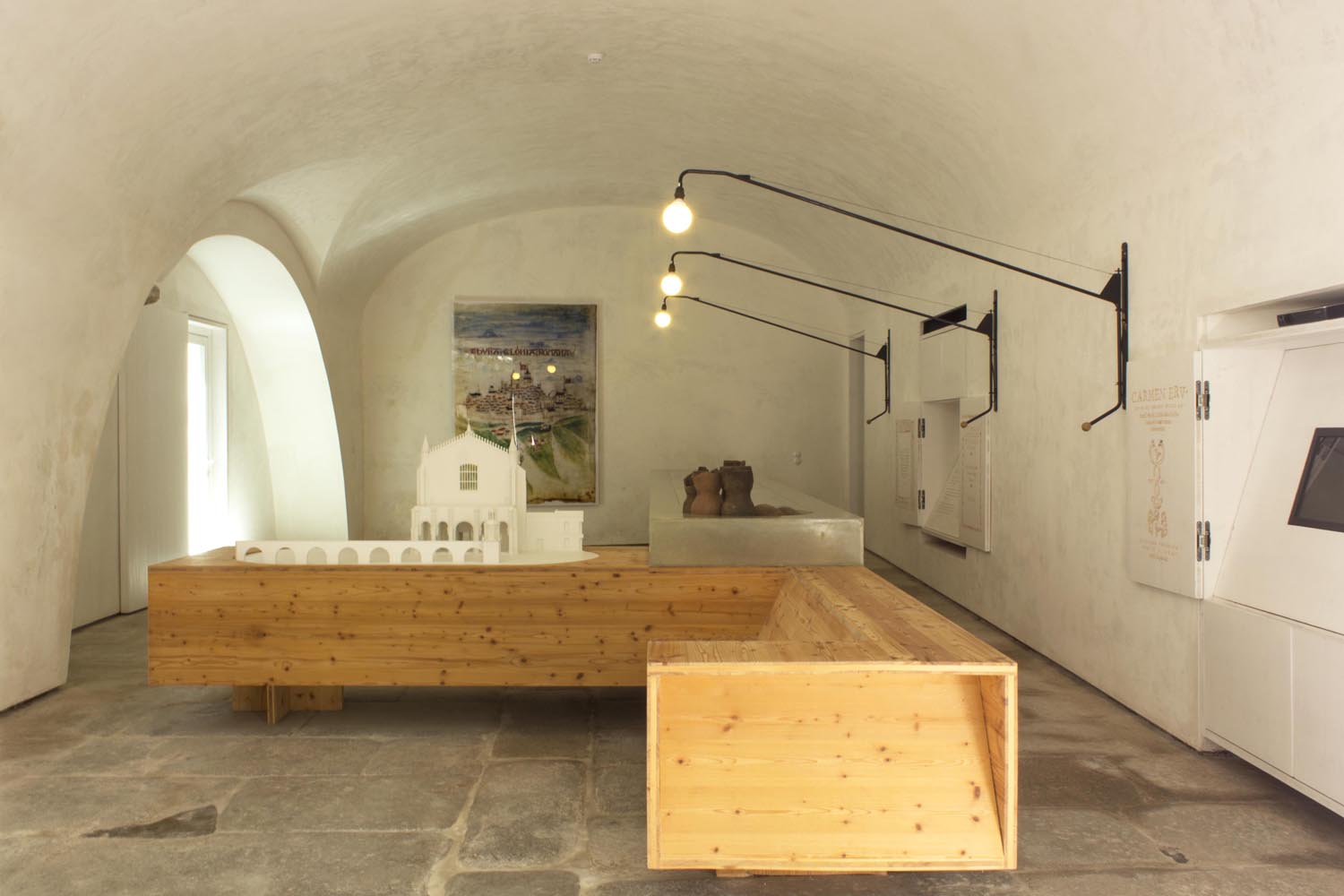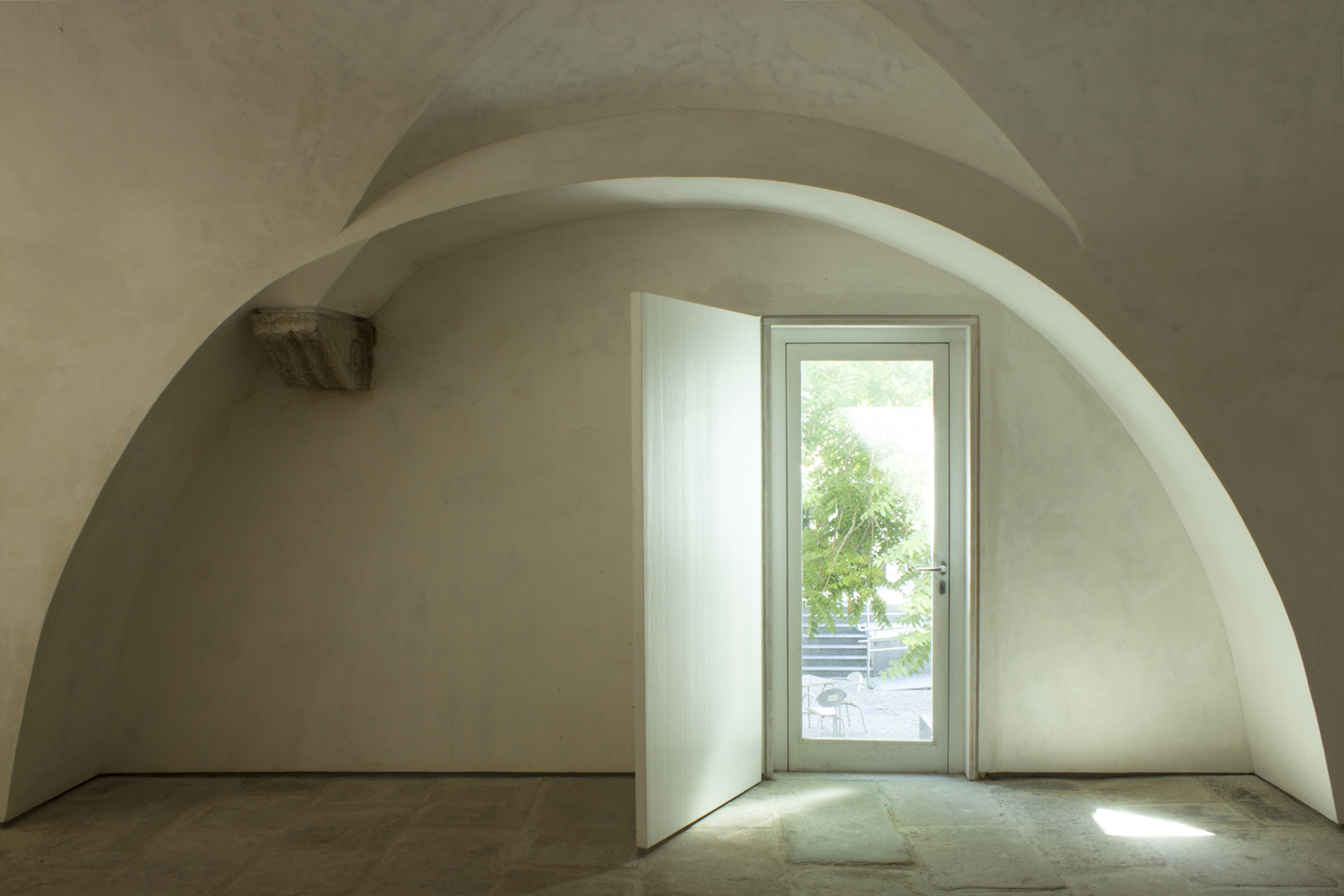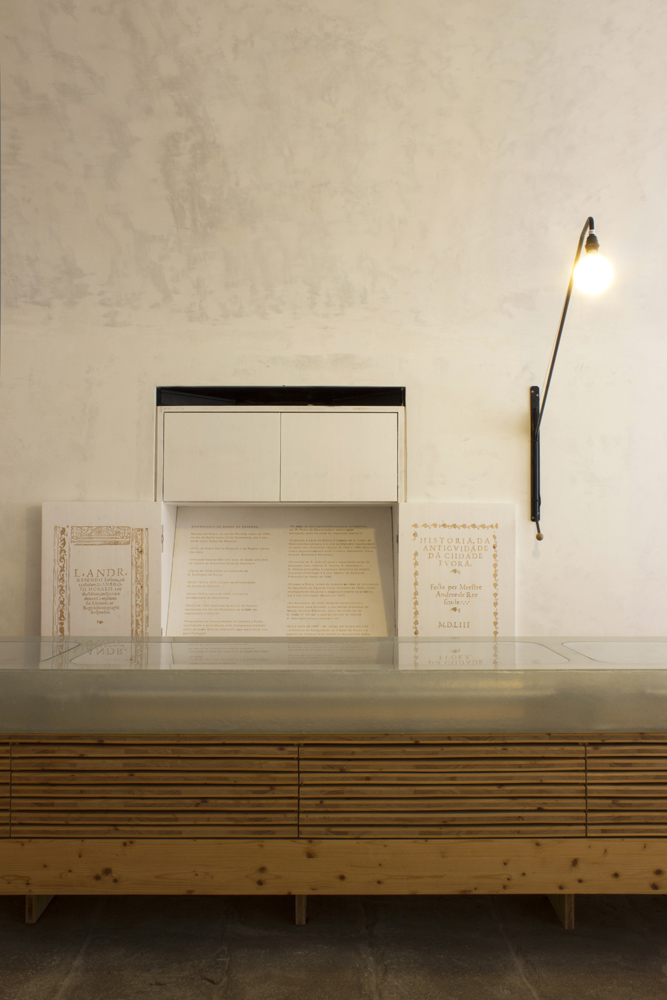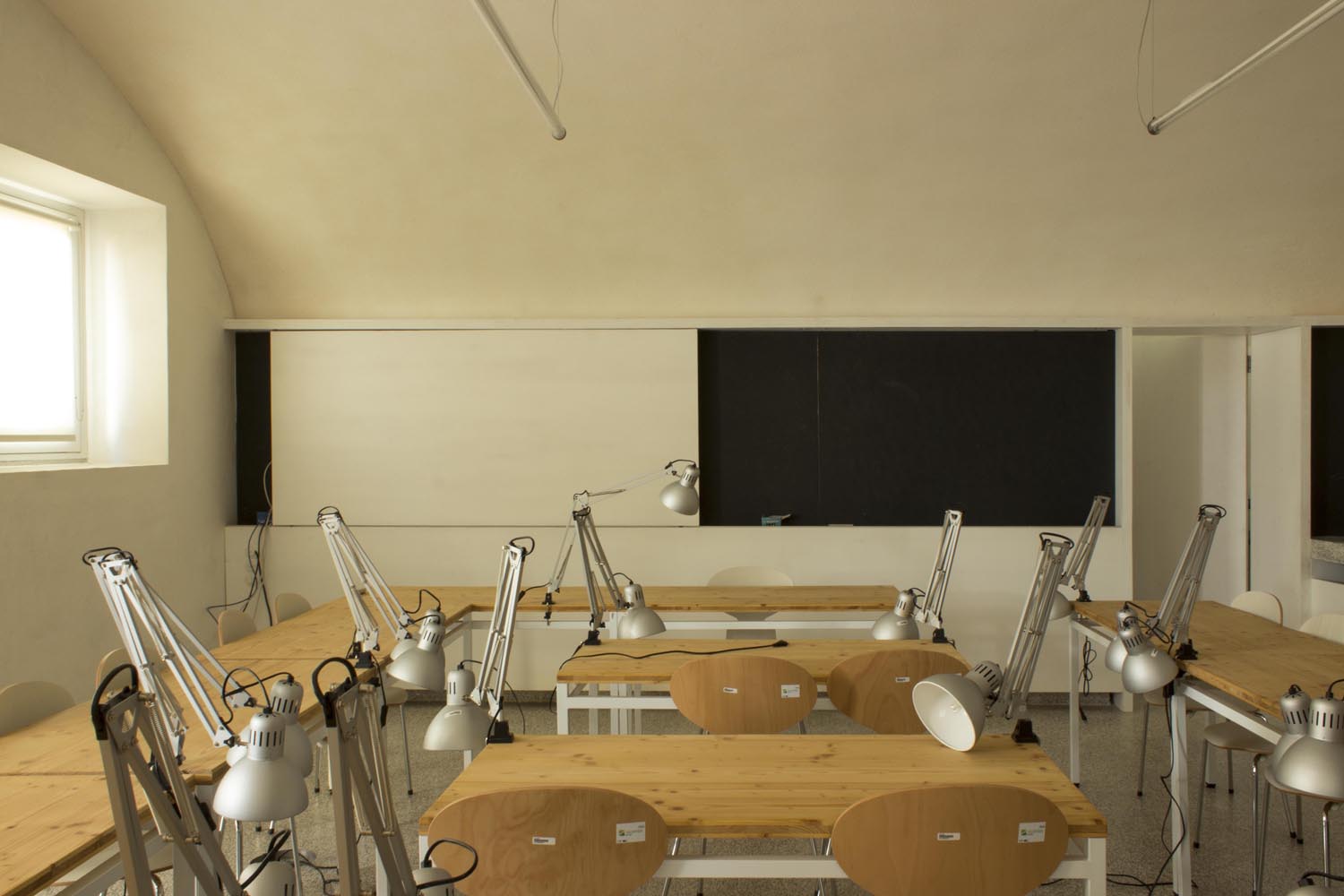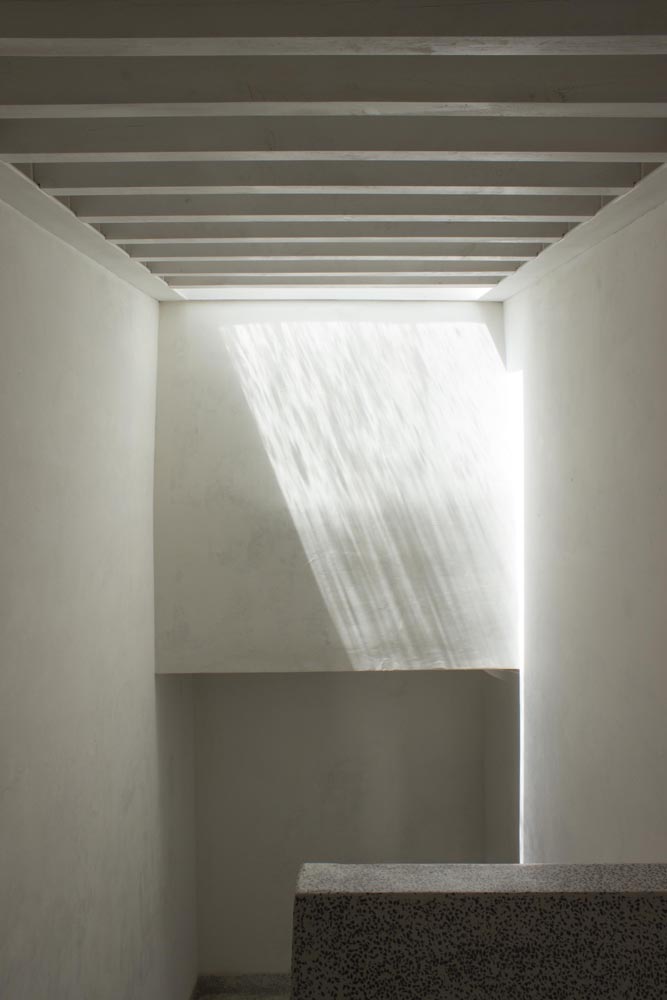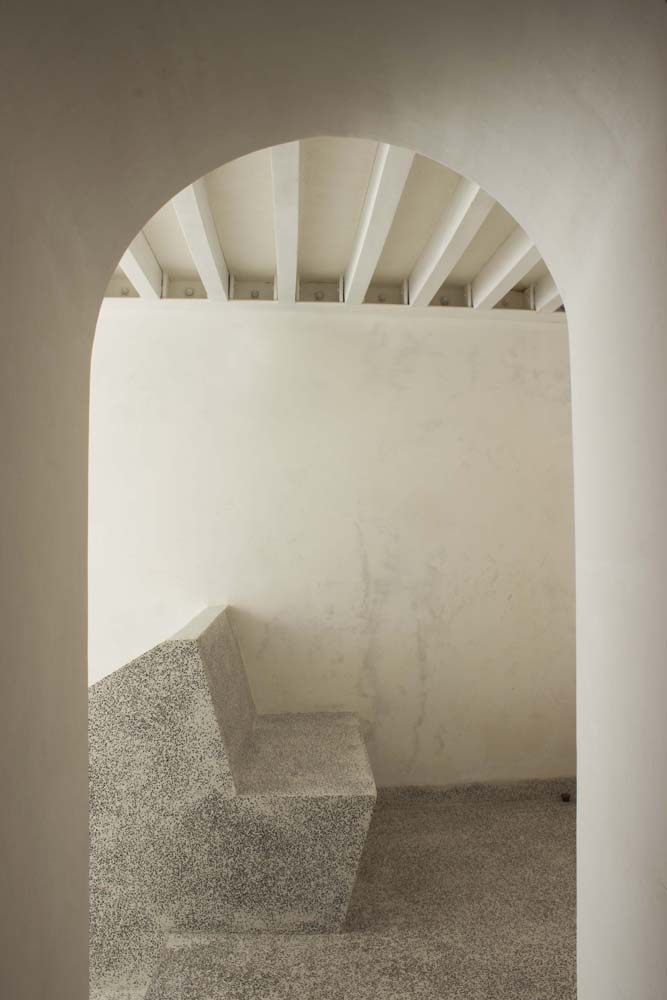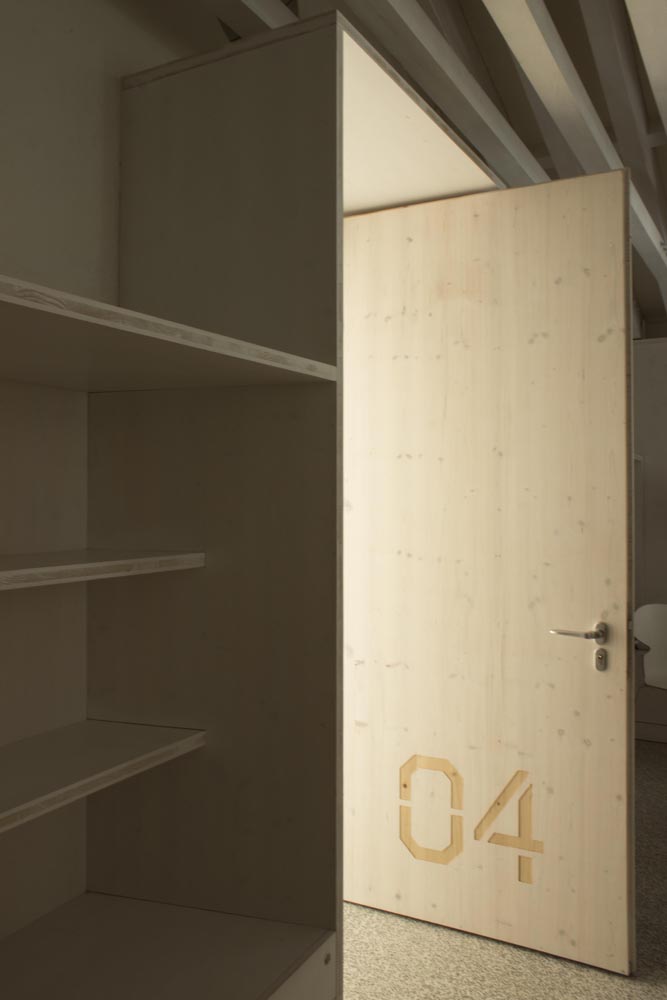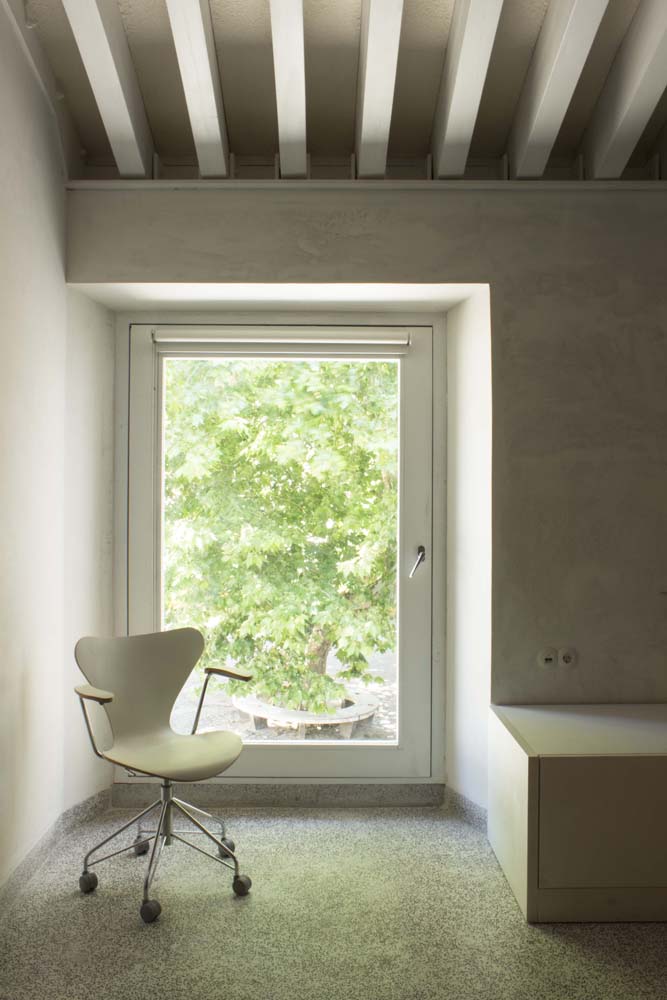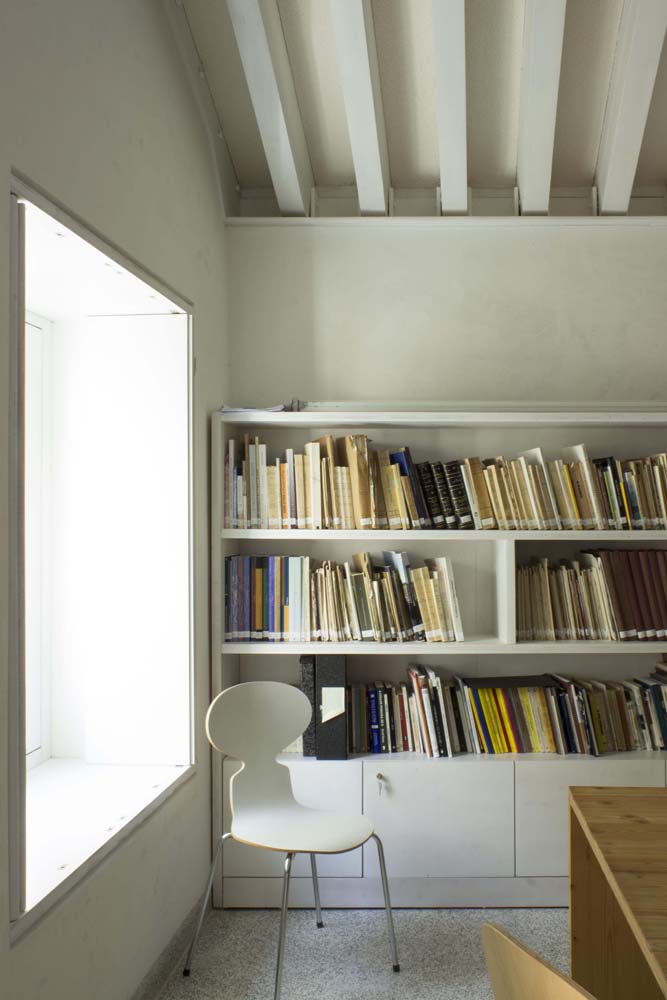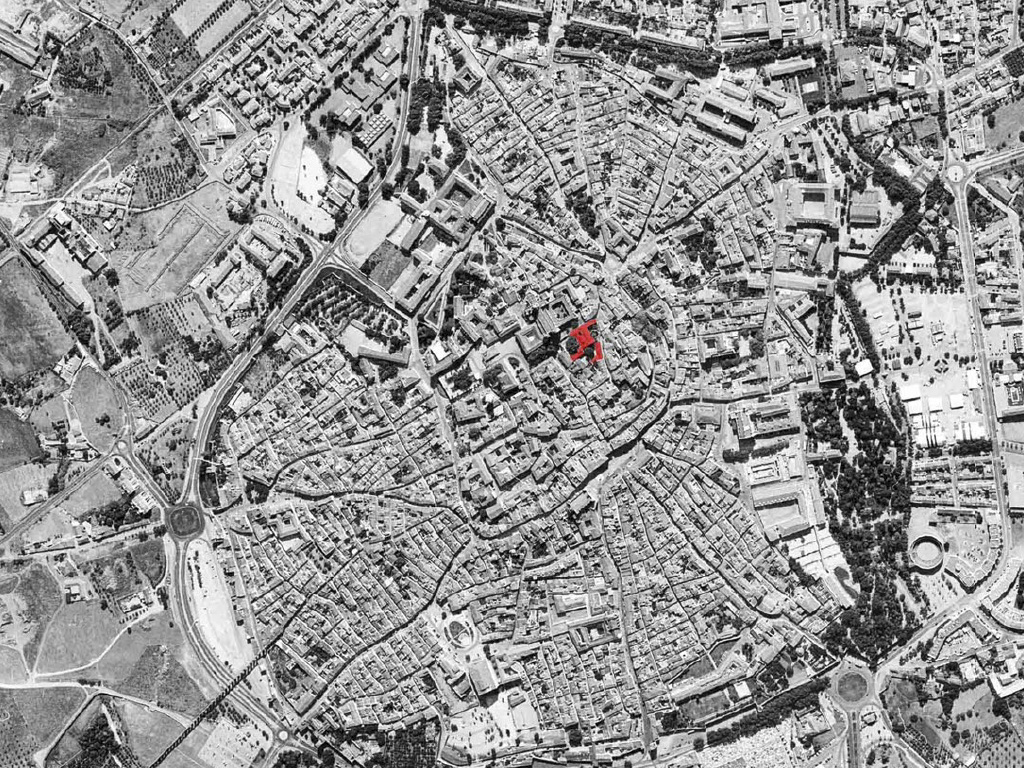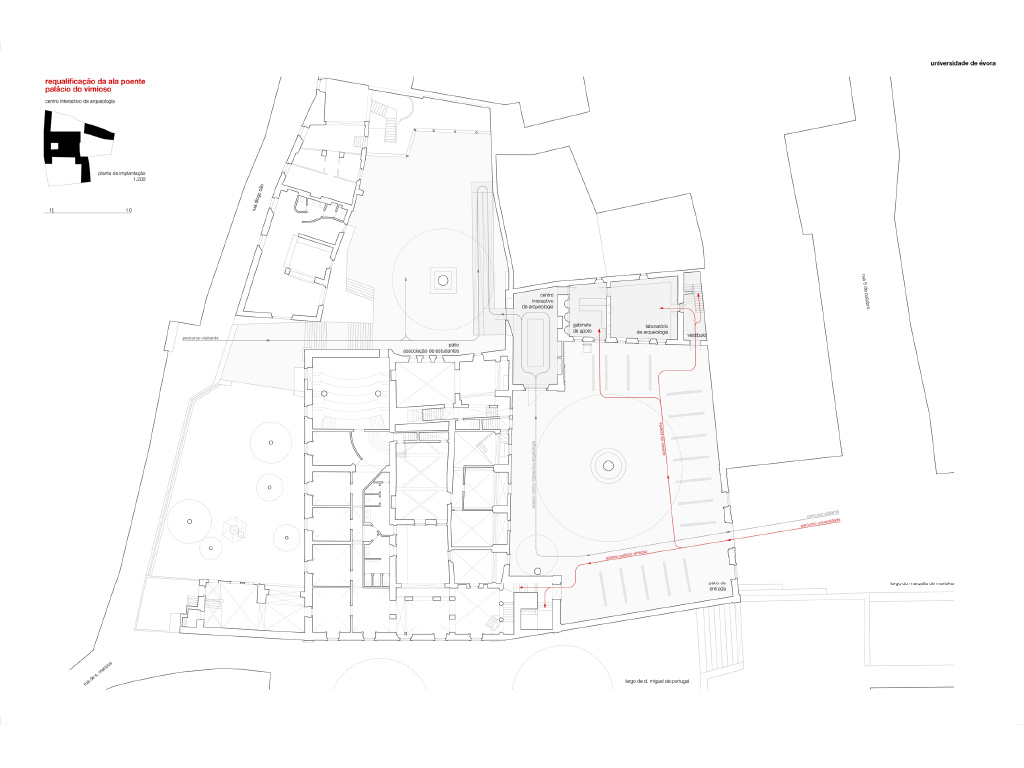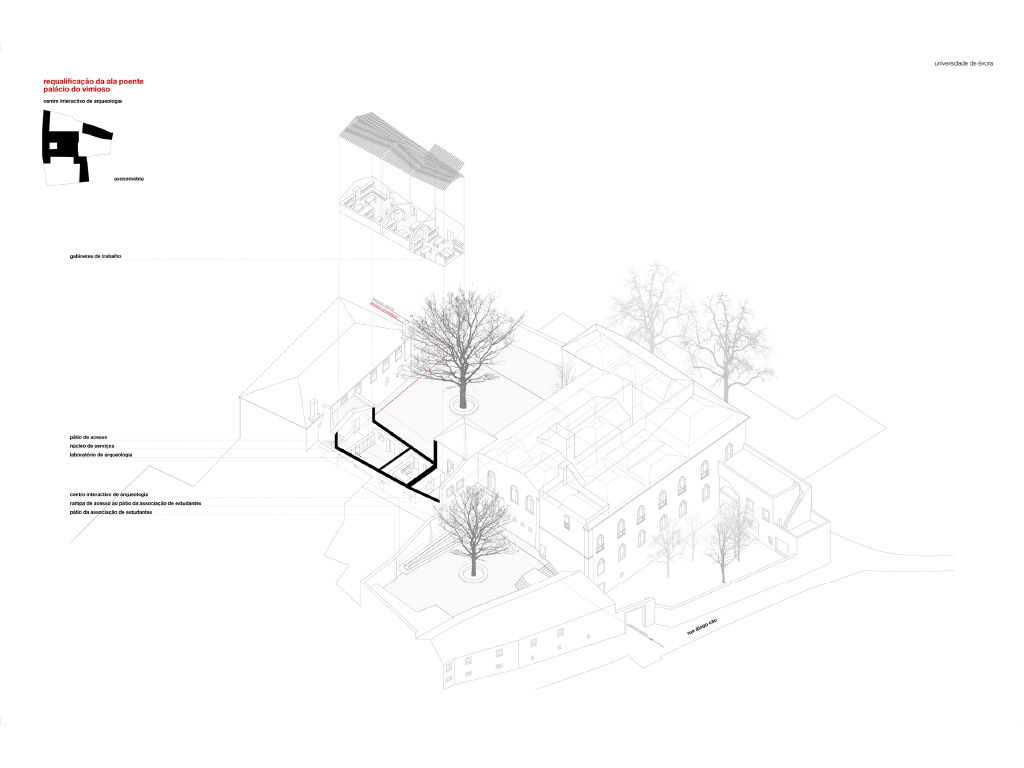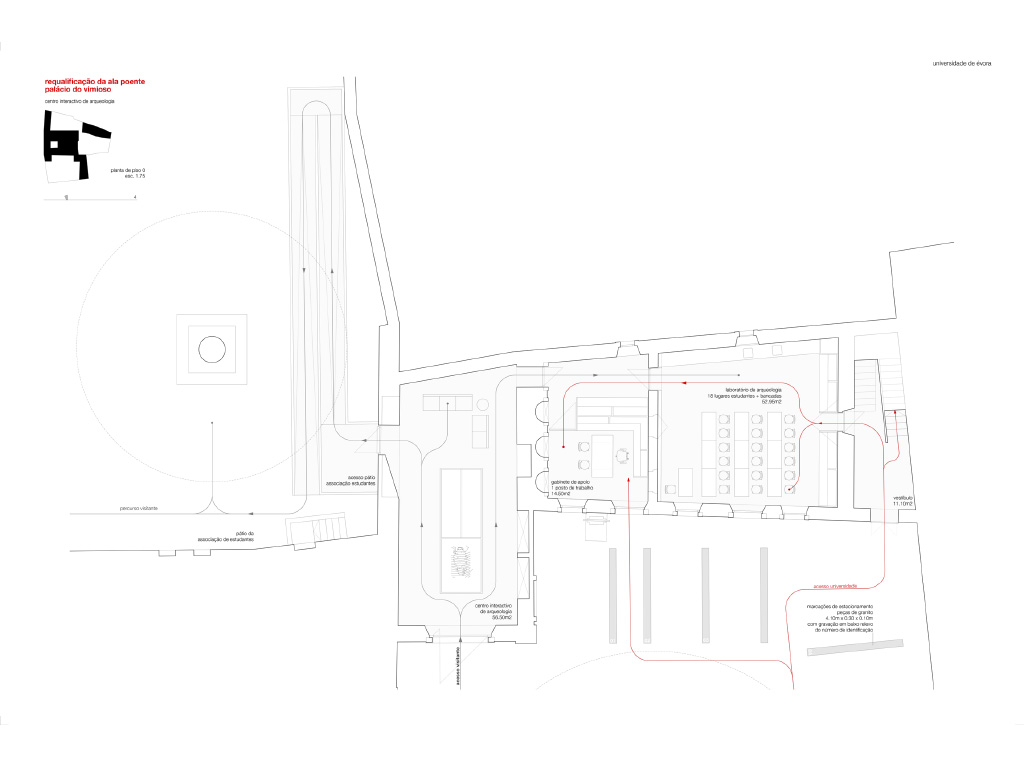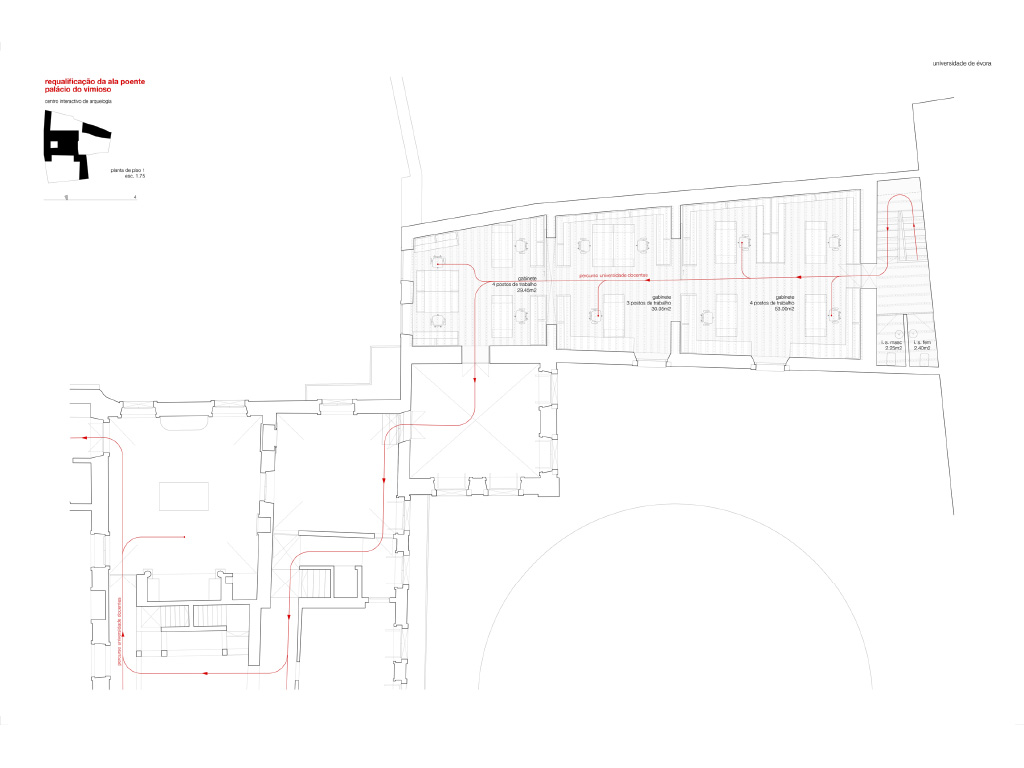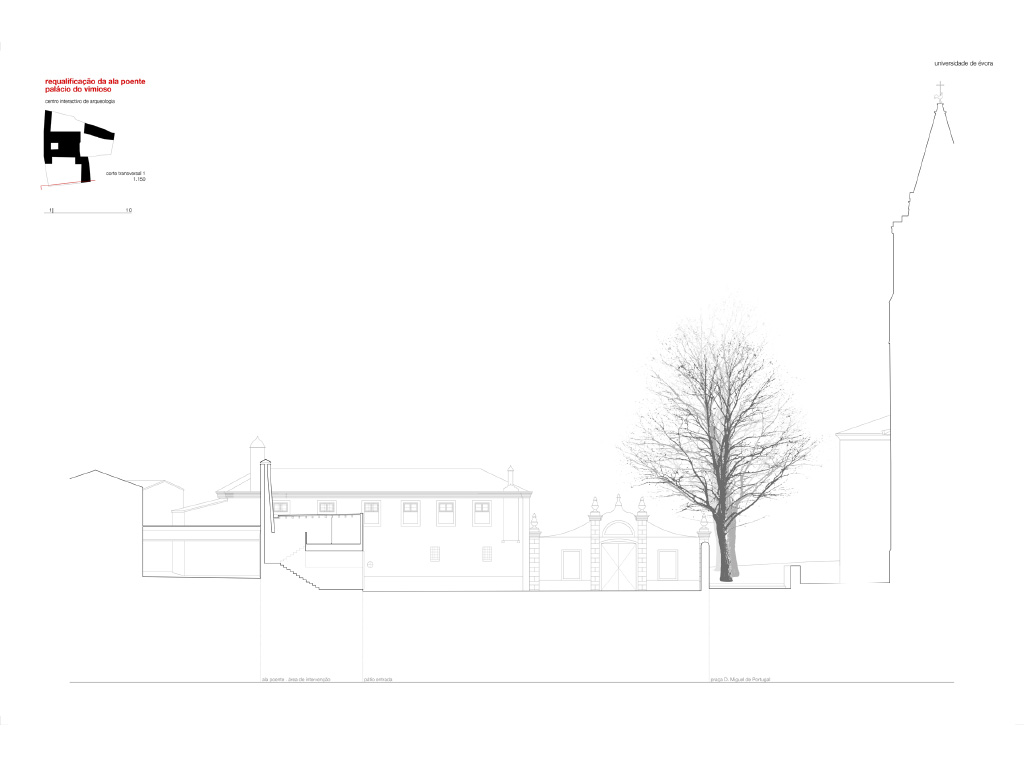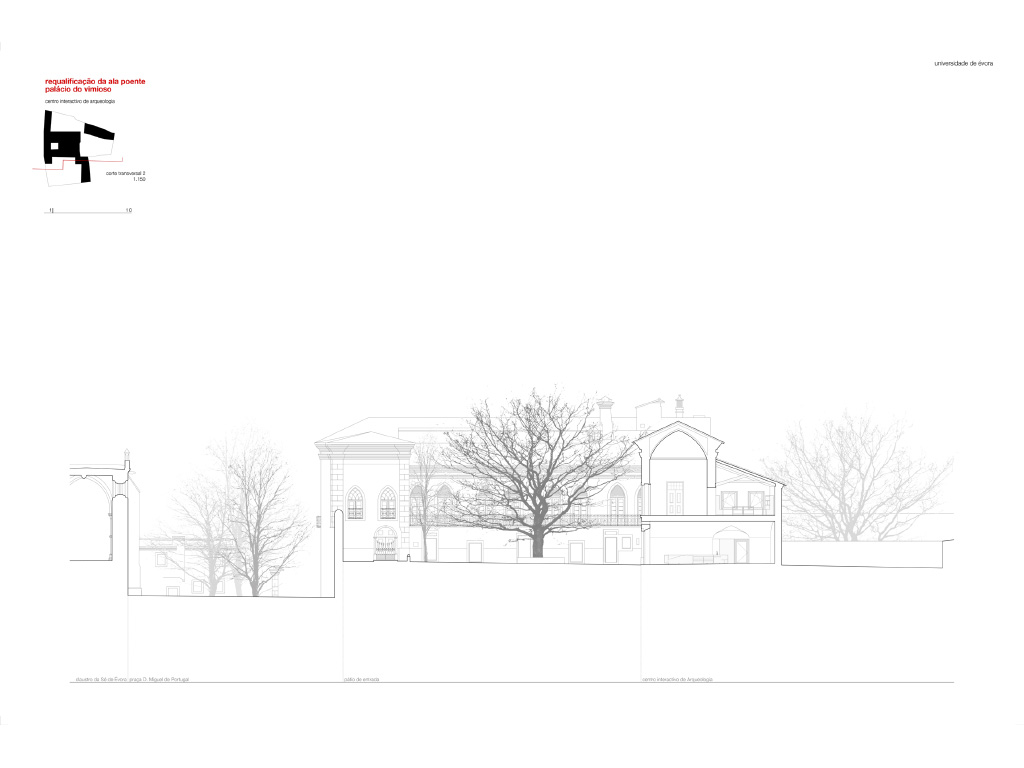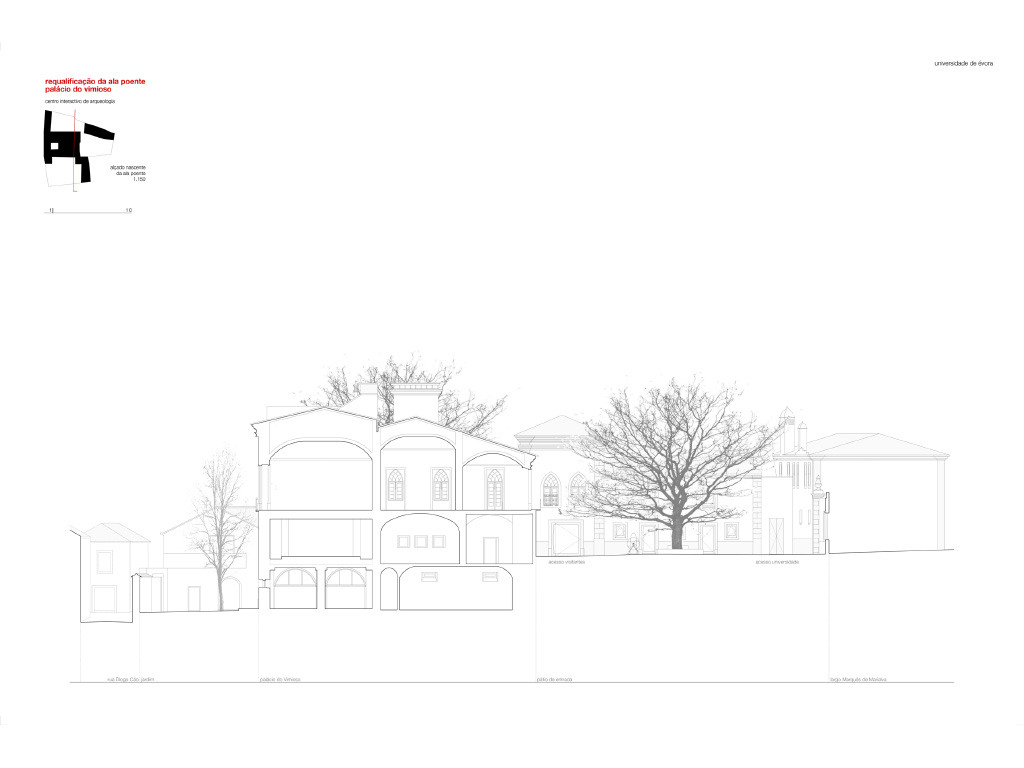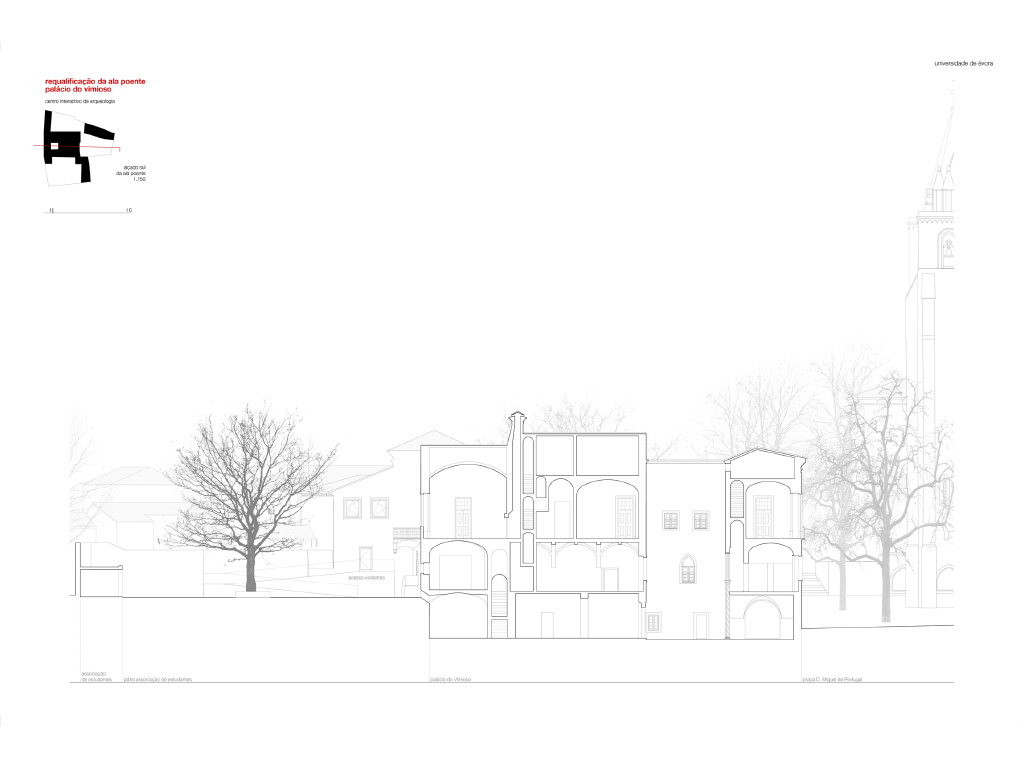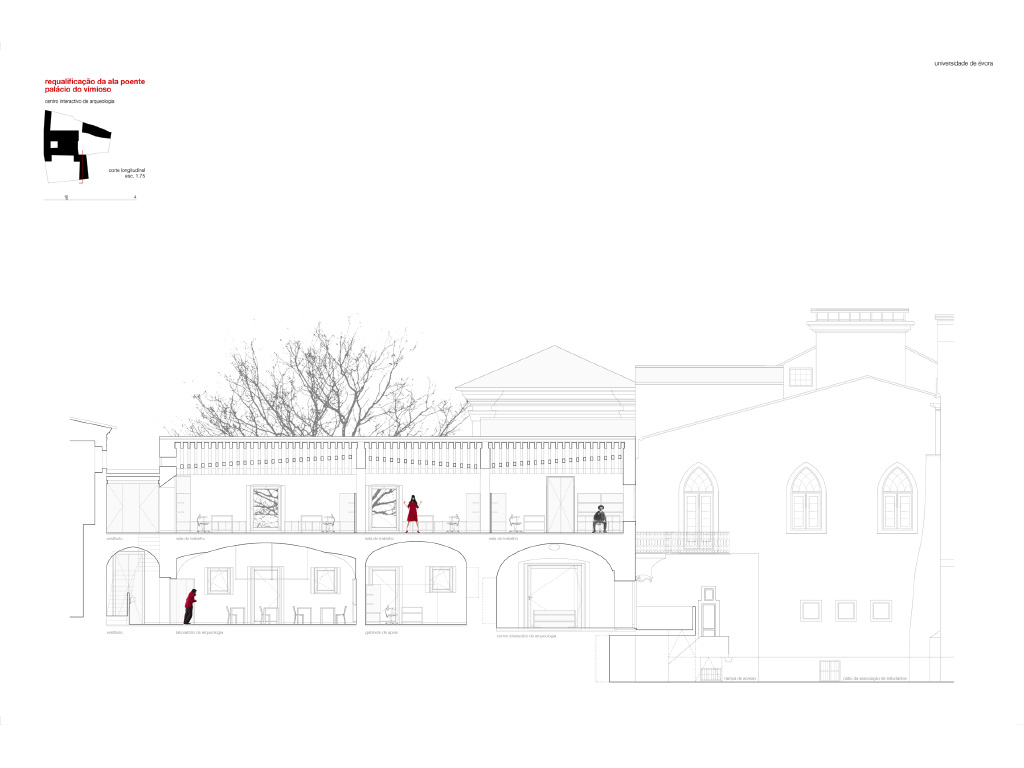12-14,
Remodelling and Extension of the West Wing of Vimioso Palace – Archaeological Interactive Centre
The Vimioso Palace in Évora, a noteworthy building from the 16th century that was once the residence of Bishop Afonso de Portugal (1485–1522) and his descendants, the Counts of Vimioso, underwent many major modifications over the centuries, most notably the demolition work in the 19th century and interventions carried out in the late 20th to convert the palace to a new programme – that of a university building.
The palace’s west wing, former coach house and stables now house the university’s Archaeology Department and the Archaeological Interactive Centre, turning a new ‘page’ in this ‘palimpsest’ of stone and mortar that has stood for five centuries.
The intervention set out to showcase the building’s spatial qualities through a reinterpretation of the architectural, renovating, replacing or redesigning the constituent elements: the vaulted ceilings and round arch windows, which became dissimulated by the addition of new elements over the years, once again de ne and organise the spaces that have now been re-equipped and refurnished in accordance with their speci cities; the new roof that has been given a wooden roof struc- ture; and the continuous terrazzo ooring that unites the two floors.
The programme is organised in a clear and functional way, adapted to each speci c space. A services nucleus at the northern end houses the staircases and toilet facilities.
The Archaeological Interactive Centre occupies the former coach house, a pivotal spot in relation to the palace’s main courtyard.
